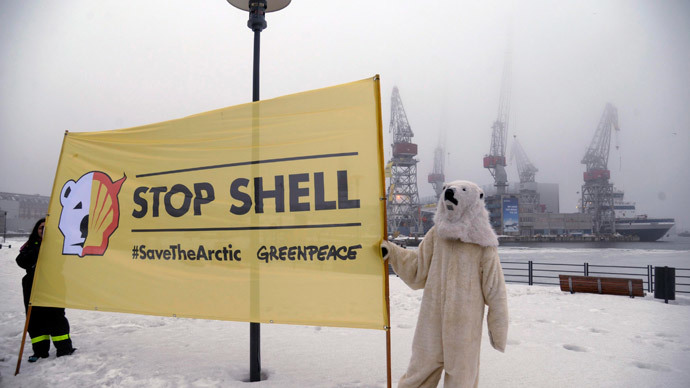Obama admin. approves regulations for oil drilling off Alaska

New rules issued by the US government will mark the first step in supporting oil and gas production off of Alaska. Among them is the requirement that companies drill a relief well to contain an uncontrolled spill before ice sets in in the Arctic.
Interior Department officials say the rules will govern exploratory drilling in the Beaufort and Chukchi seas off Alaska’s northern coast and were created because of the complicated climate, limited port infrastructure in the region and hunting needs of native communities.
"Energy exploration in the Arctic is unique. It is conducted in a very sensitive and challenging environment, where extreme weather, frigid waters, and sea ice are common, and where supporting infrastructure and logistical support capabilities are lacking," said Brian Salerno, director of the Interior Department’s Bureau of Safety and Environmental Enforcement.
READ MORE:We need off-shore drilling, says Obama; like another hurricane, add locals
The Alaska region contains vast amounts of undiscovered, technically recoverable oil and gas. Estimates suggest there are 23.6 billion barrels of oil and 104.4 trillion cubic feet of gas.
The area is rife with hazardous conditions, though. According to the Center for Biological Diversity, a group opposed to drilling in the Arctic Ocean because of threats to wildlife and the pristine ecology, the area is prone to hurricane storms, 20-foot swells and pervasive sea ice, frigid temperatures, heavy fog, and wind and seasonable darkness. The nearest Coast Guard is 1,000 miles away and there is no deep port close enough to handle the size of drilling containers and equipment.
Offshore Oil News: DOI Proposes New Arctic Drilling Regs For Offshore Alaska: Law360, New York (February 20, 2... http://t.co/ZD4KbAhM9g
— Global Offshore (@GOResources) February 21, 2015
The rules are meant to ensure oil companies and their contractors are prepared for Arctic conditions and also implement a “region-specific” oil spill response plan, which requires quick access to equipment to contain a potential blowout and an available rig to drill a “relief well” to half oil from a blowout.
“The proposed rule continues to allow for technological innovation, as long as the operator can demonstrate that the level of its safety and environmental performance satisfied the standards set forth in the proposed rule,” the Interior Department said.
READ MORE:Alaska’s budget sinks as oil continues dramatic fall
The draft rules come three years after Royal Dutch Shell suffered several accidents in the Arctic in 2012. At the time, Shell was granted permission to drill for oil in the Beaufort and Chukchi Seas and originally intended to drill 10 wells, starting operations with two drillings rigs called the Kulluk and the Noble Discoverer.
Over the course of the year, the Noble Discoverer experienced several mishaps, nearly drifting ashore and forced to halt drilling just one day after it started due to sea ice. During a test of its oil spill containment system, the container was “crushed like a beer can,” and just a couple of months later the rig caught on fire.
Watch @Maddow’s take on #Shell’s attempt to head back to Alaska and to weaken drilling regulations in #Arctic. http://t.co/hPXu5QZZco
— GP Arctic Watch (@GParctic) September 27, 2014
As for the Kulluk, it broke free of its tow lines during a storm in 2012 and ran aground on Sitkalidak Island. The ship was carrying 155,000 gallons of fuel and other hazardous materials. None of it spilled, but the Department of the Interior investigated and concluded: “Shell screwed up in 2012 and we’re not going to let them screw up when they try to drill in the Arctic again.”
The Environmental Protection Agency fined Shell $1.1 million for violations of the Clean Air Act, since Noble Discoverer and the Kulluk’s engines released nitrogen oxide, ammonia and other pollutants in excess of what permits allowed. The EPA cited 23 violations of the air permits governing the Discoverer and 11 for the Kulluk.
READ MORE:Barely surviving: Alaska's polar bear population falls 40% in 10 years
Shell plans to resume a scaled-back drilling program in Chukchi this summer before the new rules will be completed.
“We will be holding them to the standards that we have held them to before, with upgrades and proof they and do what they say they do before they’re allowed to go there,” Interior Secretary Sally Jewell said, according to The Hill.
Oil companies, including Shell and ConocoPhillips Co., lobbied the White House on the rules last year, telling officials that many of the regulations they’re considering would have little environmental or safety benefit but cost billions of dollars.












